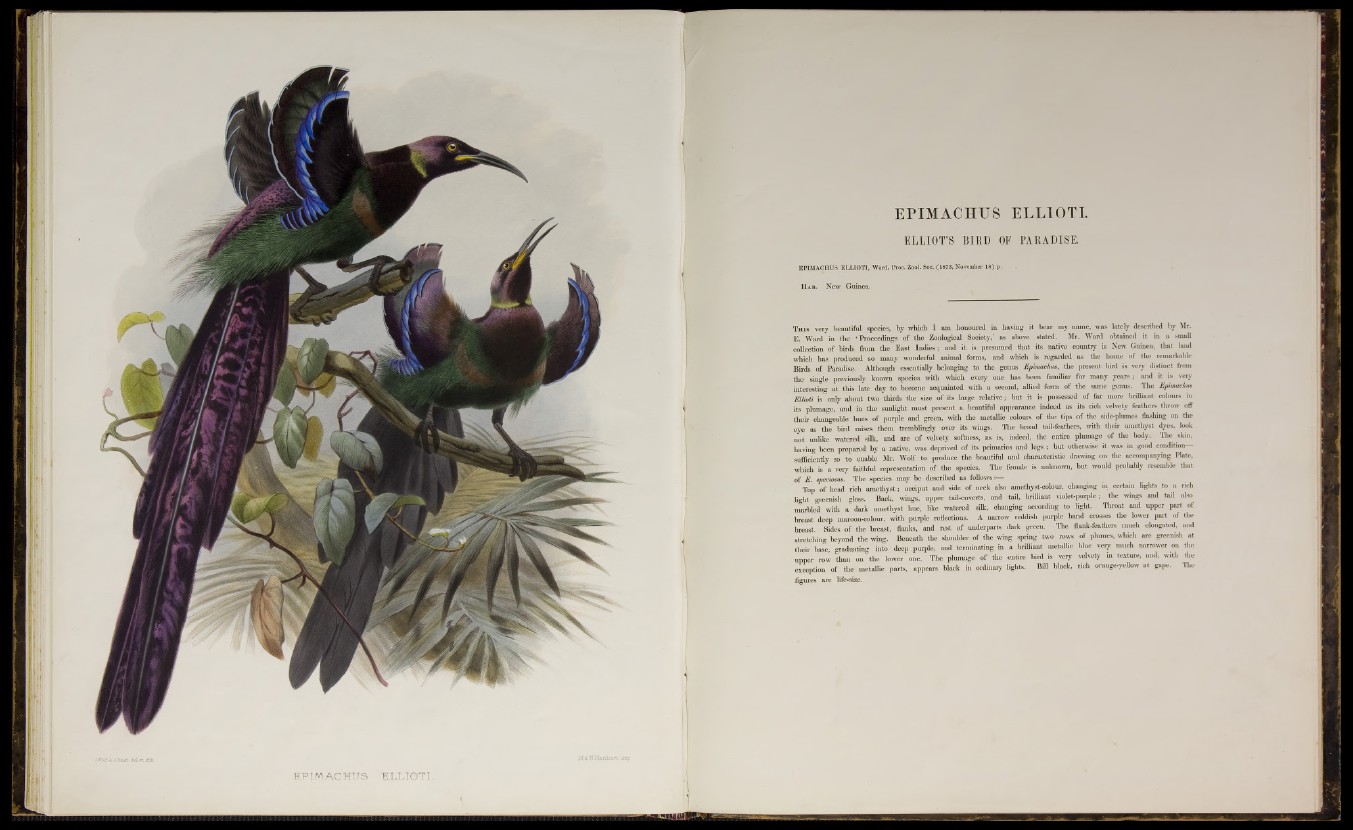
E P IM A C H U S EUL.IQTT
EPIMACHUS ELLIOT!
E LLIOT’S BIRD OF PARADISE.
EPIMACHUS ELLIOTI, Ward, Proc. Zool. Soc. (1873, November 18) p.
I I a b . New Guinea.
T h i s very beautiful species, by which I am honoured in having it bear my name, was lately described by Mr.
E. Ward in the ‘Proceedings of the Zoological Society,’ as above stated. Mr. Ward obtained it in a small
collection of birds from the East Indies; and it is presumed that its native country is New Guinea, that land
which has produced so many wonderful animal forms, and which is regarded as the home of the remarkable
Birds of Paradise. Although essentially belonging to the genus Epimachus, the present bird is very distinct from
the single previously known species with which every one has been familiar for many years; and it is very
jntwpgting at tViig late day to become acquainted with a second, allied form o f the same genus. The Epimachus
Ellioti is only about two thirds the size of its large relative; but it is possessed of fax more brilliant colours in
its plumage, and in the sunlight must present a beautiful appearance indeed as its rich velvety feathers throw off
their changeable hues of purple and green, with the metallic colours of the tips of the side-plumes flashing on the
eye as the bird raises them tremblingly over its wings. The broad tail-feathers, with their amethyst dyes, look
not imlibp watered silk, and are of velvety softness, as is, indeed, the entire plumage of the body. The skin,
having been prepared by a native, was deprived of its primaries and legs ; but otherwise it was in good condition—
sufficiently so to enable Mr. Wolf to produce the beautiful and characteristic drawing on the accompanying Plate,
which is a very faithful representation o f the species. The female is unknown, but would probably resemble that
of E. speciosus. The species may be described as follows:—
Top of head rich amethyst; occiput and side of neck also amethyst-colour, changing in certain lights to a rich
light greenish gloss. Back, wings, upper tail-coverts, and tail, brilliant violet-purple; the wings and tail also
marbled with a dark amethyst hue, like watered silk, changing according to light. Throat and upper part of
breast deep maroon-colour, with purple reflections. A narrow reddish purple band crosses the lower part of the
breast. Sides of the breast, flanks, and rest of underparts dark green. The flank-feathers much elongated, and
stretching beyond the wing. Beneath the shoulder of the wing spring two rows of plumes, which are greenish at
their base, graduating into deep purple, and terminating in a brilliant metallic blue very much narrower on the
upper row than on the lower one. The plumage o f the entire bird is very velvety m texture, and, with the
exception of the metallic parts, appears black in ordinary lights. Bill black, rich orange-yellow at gape. The
figures are life-size.